
Alessandro Tassoni was an Italian poet and writer, from Modena, best known as the author of the mock-heroic poem La secchia rapita.
Dolce Stil Novo, Italian for "sweet new style", is the name given to a literary movement in 13th and 14th century Italy. Influenced by the Sicilian School and Tuscan poetry, its main theme is Divine Love. The name Dolce Stil Novo was used for the first time by Dante Alighieri in Purgatorio, the second canticle of the Divina Commedia. In the Divina Commedia Purgatory he meets Bonagiunta Orbicciani, a 13th-century Italian poet, who tells Dante that Dante himself, Guido Guinizelli, and Guido Cavalcanti had been able to create a new genre: a stil novo.
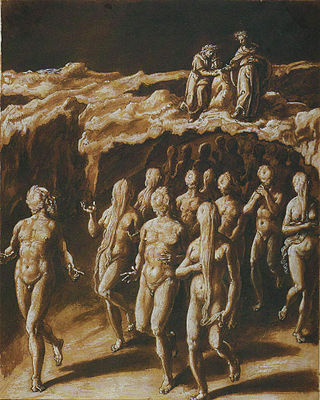
In Dante's Inferno, contrapasso is the punishment of souls "by a process either resembling or contrasting with the sin itself." A similar process occurs in the Purgatorio.
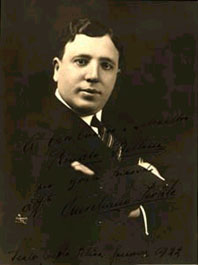
Aureliano Pertile was an Italian lyric tenor. Many critics consider him one of the most exciting operatic artists of the inter-war period, and one of the most important tenors of the 20th century.

Morgante is an Italian romantic epic by Luigi Pulci which appeared in its final form in 1483; a now-lost 23-canto version likely appeared in late 1478; two other 23-canto versions were published in 1481 and 1482. The work was commissioned by Lucrezia Tornabuoni.
The Crepusculars were a group of Italian post-decadent poets whose work is notable for its use of musical and mood-conveying language and its general tone of despondency. The group's metaphorical name, coined in 1910 by literary critic Giuseppe Antonio Borgese to refer to a condition of decline, describes a number of poets whose melancholic writings were a response to the modernization of the early 20th century.
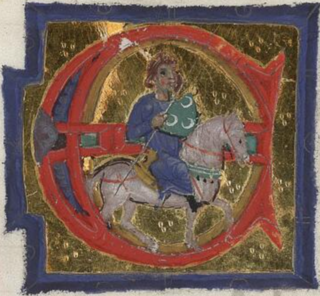
Rambertino di Guido Buvalelli, a Bolognese judge, statesman, diplomat, and poet, was the earliest of the podestà-troubadours of thirteenth-century Lombardy. He served at one time or other as podestà of Brescia, Milan, Parma, Mantua, Genoa, and Verona. Ten of his Occitan poems survive, but none with an accompanying melody. He is usually regarded as the first native Italian troubadour, though Cossezen and Peire de la Caravana may precede him. His reputation has secured a street named in his honour in his birthplace: the Via Buvalelli Rambertino in Bologna.
Andrea Mangiabotti, called Andrea da Barberino, was an Italian writer and cantastorie ("storyteller") of the Quattrocento Renaissance. He was born in Barberino Val d'Elsa, near Florence, and lived in Florence. He is principally known for his prose romance epic Il Guerrin Meschino, his I Reali di Francia, a prose compilation of the Matter of France epic material concerning Charlemagne and Roland (Orlandino) from various legends and chansons de geste, and for his Aspramonte, a reworking of the chanson de geste Aspremont, which also features the hero Ruggiero. Many of his writings probably derive from Franco-Italian works, such as the Geste Francor, that includes versions of the stories of Reali di Francia and dates to the first half of the fourteenth century. His works, which circulated at first in manuscript, were extremely successful and popular, and were a key source of material for later Italian romance writers, such as Luigi Pulci (Morgante), Matteo Maria Boiardo and Ludovico Ariosto.
BÏF§ZF+18 Simultaneità e Chimismi lirici is a poetry book and artist's book published in 1915 by the Italian futurist Ardengo Soffici. Despite its rarity, the book has become famous as one of the finest examples of futurist 'words-in-freedom', and has been described as 'absolutely the most important book that came out of Florentine Futurism'.
Bonagiunta Orbicciani, also called Bonaggiunta and Urbicciani, was an Italian poet of the Tuscan School, which drew on the work of the Sicilian School. His main occupation was as a judge and notary. Fewer than forty of his poems survive.

Ruggero Pertile is an Italian long-distance runner who specialises in marathon running. He was the winner of the 2004 Rome City Marathon and has represented Italy internationally at three World Championships in Athletics and two Olympic Games.
La Spagna, also called La Spagna in rima, is a 14th-century Italian epic attributed to the Florentine Sostegno di Zanobi and likely composed between 1350 and 1360. The poem is in ottava rima, composed of 40 cantos, each of about 40 octaves. The work is an adaptation of the story of Charlemagne's battles in Spain and the adventures of his nephew, the paladin Orlando (Roland), including the tale of his mortal duel with Ferraguto and his ultimate death at Roncesvalles.

Malombra is an 1881 novel by the Italian writer Antonio Fogazzaro. It is a Gothic story set close to Lake Como in the mid-Nineteenth century. It was Fogazzaro's debut novel.
Daniele Cortis is an 1885 novel by the Italian writer Antonio Fogazzaro. The plot follows the impossible love between Daniele Cortis, an idealistic Catholic politician, and his cousin Elena, married to a man who does not understand her.
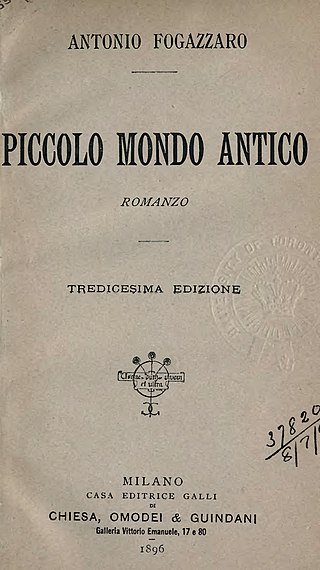
The Little World of the Past is an 1895 novel by the Italian writer Antonio Fogazzaro. It was the author's most successful work, considered to be his "masterpiece". Fogazzaro finished the first draft in 1884, and spent the next decade revising it. The novel has an alpine backdrop, and is set in the 1850s during the Risorgimento. Fogazzaro modelled the two protagonists after his parents.

The Teatro dei Rozzi is a live-performance theater located on Piazza Indipendenza #15, in the city of Siena, region of Tuscany, Italy; while this structure was inaugurated in 1817, the sponsoring organization dated to 1531.
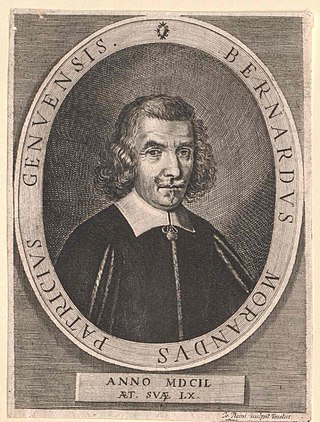
Bernardo Morando was an Italian lyric poet, novelist and playwright.
Charles Peter Brand, FBA, commonly known as Peter Brand, was a British scholar of Italian studies and a university administrator. He was the Professor of Italian at the University of Edinburgh from 1966 to 1988 and the university's vice-principal from 1984 to 1988.










